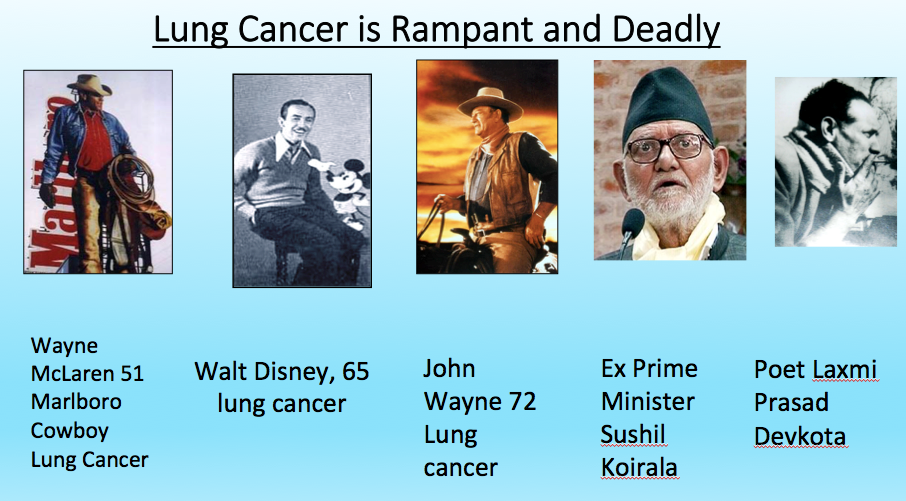CT- scan and MRI centers in Kathmandu
6 November, 2020CT- scan and MRI centers in Kathmandu...
Read More
Late diagnosis of Lung Cancer in Nepal – a tragedy with long term consequences for Nepal
MBBS, MS, MRCS, Fellowship ( Univ of Chicago)
Consultant Cardiothoracic Surgeon
Nepal Cancer Hospital
Shahid Dharma Bhakta National Transplant Centre
Nepal Cancer Hospital
I would like to start with a story ( and I have many many such stories). A friend’s father who was a smoker presented with some arm pain. Initially, it was thought general pain. But X-ray showed otherwise. A bone biopsy came back as lung cancer that had spread. It was fourth stage lung cancer. This was very tragic and traumatic for the family and I was overwhelmed to see them go through that pain. The multiple journeys through chemotherapy and radiation, not to mention the major cost involved with no major solution. The cancer slowly sucks on the patient till he gets weaker and weaker till he or she has no strength to fight on.
Coming back to Nepal after training in UK and US, I began to study this problem deeper and deeper. It became clear that even in developed countries like US or UK, lung cancer detection at an early stage 1 or 2 is only around 30%. Unfortunately, in Nepal, it is around 3-5%.

Every week I see 3-8 patients that come to me with suspected or confirmed lung cancer. Only about 1 or 2 of them per month are in early stage and can be treated with an operation. Even more tragic is the fact that lung cancer kills more people than colon, breast and prostate cancer combined. Thus it is so deadly.
I this looked into why our detection rate of early stage lung cancer is so low? One major reason is that Nepal (and similar developing countries) does not have the infrastructure system of primary health care physician where every citizen is allocated a dedicated physician. Which means if there is a cough or blood in sputum or unknown weight loss – most people ignore it for a while. Sometimes, they go to a local pharmacist (bypassing the doctor) who will give some cough syrup and antibiotic. Few others get checked up by the doctor who will order a chest X-ray. The X-ray may show a scar or mass. Many many times these scars will be non cancer like tuberculosis or pneumonia. But occasionally, they WILL BE cancer and the patient will continue being treated for tuberculosis on and on for several months. By the time someone realizes this is NOT tuberculosis, the disease has got much bigger and in 3rd or 4th stage.

Also a good number of patients will have NO SYMPTOMS. No cough, no difficult in breathing. A random chest X-ray will then accidentally show a mass. Thus either patients are unlucky and present late because they have no symptoms whatsoever or ignore the symptoms completely. Even people who are quite well off financially present to me in quite late stage of lung cancer.
Seeing this terrible tragedy, I have gone on radio and television to explain about lung cancer many many times. Through efforts by Nepal Cancer Hospital, brochures have been made and even a large wall poster has been created with pictures to explain how to ask for help the moment some symptoms are noted.
Discussions have also taken place with the National TB Centre, Thimi to include in their brochure to seek help for possible cancer within 2 weeks as per chart below:
Our community needs to be aware of these symptoms as shown above and seek medical help immediately. A scar in the chest X-ray has to be considered as cacer unless proven otherwise by a biopsy.
In summary, early detectionn of lung cancer is very low in Nepal and remains a major challenge. We need to explore cheap but effective avenues to overcome this challenge via media, support groups and students.
I cannot do this alone and need every help possible. Thus please spread the message and hopefully many lives can be saved on time.
Leave a comment